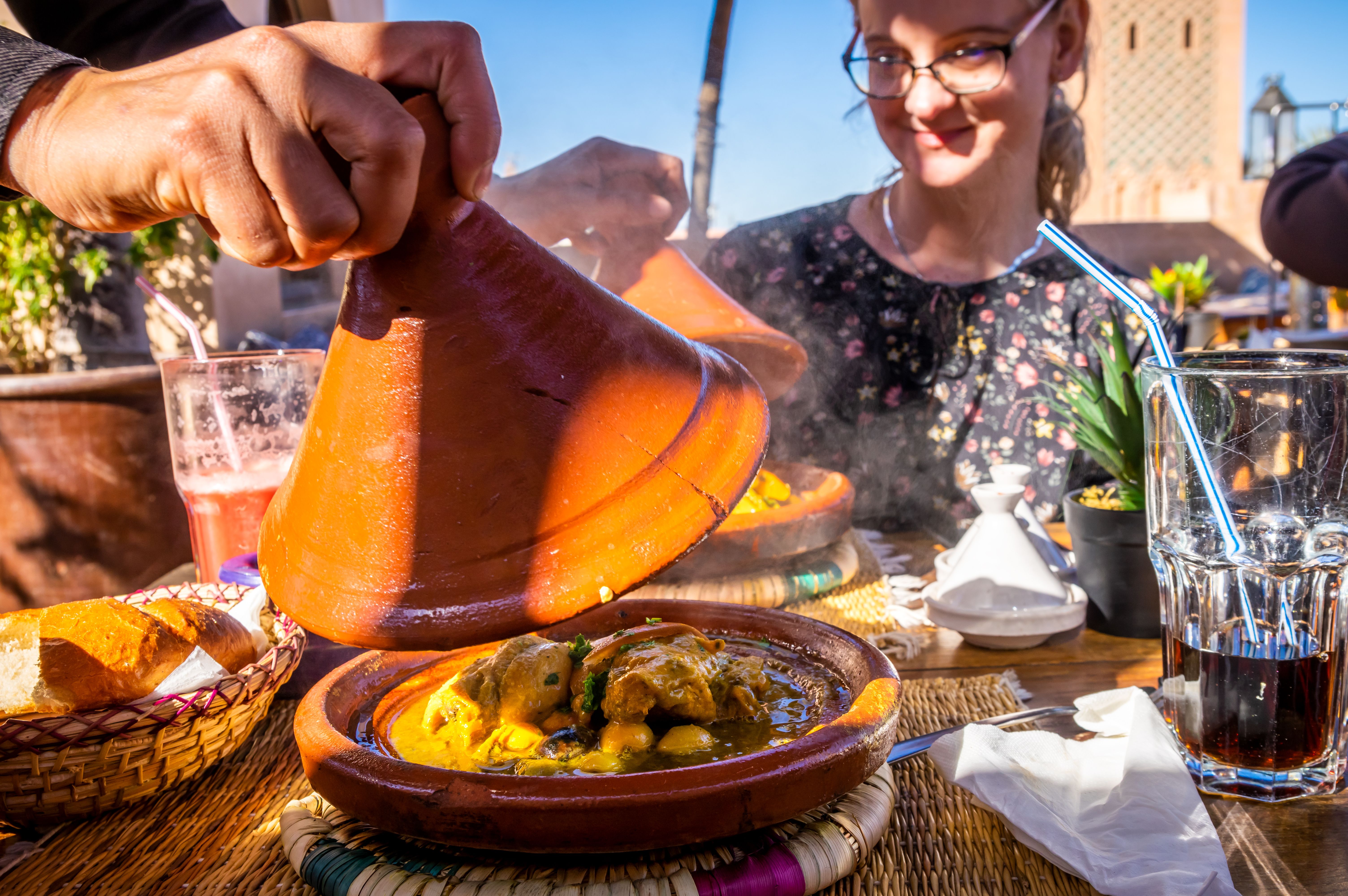The Essence of Moroccan Cuisine: Exploring the Tagine
Introduction to Moroccan Cuisine
Moroccan cuisine is a vibrant tapestry of flavors, colors, and aromas that reflects the country's rich history and cultural diversity. At the heart of this culinary tradition lies the tagine, a slow-cooked stew that captures the essence of Moroccan cooking. Whether you're a seasoned chef or a curious food enthusiast, exploring the tagine offers a delightful journey into the soul of Moroccan gastronomy.

What is a Tagine?
The term "tagine" refers both to the traditional earthenware pot used for cooking and to the dish itself. The distinctive conical lid of the tagine pot allows steam to circulate during cooking, ensuring that meat, vegetables, and spices are infused with flavor while remaining tender and juicy. This method of cooking is not only practical but also adds a unique touch to the dining experience.
Tagines can be made with a variety of ingredients, from lamb and beef to chicken and fish, often accompanied by an array of vegetables and aromatic spices such as saffron, ginger, and cumin. The beauty of a tagine lies in its versatility and ability to adapt to whatever ingredients are available.
The Art of Making a Tagine
Creating a tagine is an art form that requires patience and attention to detail. The process begins with layering ingredients in the pot, starting with a bed of onions and garlic, followed by meat or fish, and topped with vegetables and spices. As the dish slow-cooks over low heat, flavors meld together, creating a harmonious blend that is both comforting and exotic.

One of the secrets to a perfect tagine is using quality ingredients. Fresh produce, fragrant spices, and high-quality meat or fish make all the difference in achieving an authentic taste. Additionally, allowing sufficient time for the dish to cook slowly is essential for developing depth of flavor.
Popular Variations of Tagine
While there are countless variations of tagine, some have become particularly renowned for their distinctive flavors. Here are a few popular types:
- Lamb Tagine with Prunes: A sweet and savory combination featuring tender lamb, dried prunes, almonds, and spices.
- Chicken Tagine with Preserved Lemons: A zesty dish with chicken, preserved lemons, olives, and aromatic herbs.
- Vegetable Tagine: A vibrant medley of seasonal vegetables seasoned with spices like paprika and coriander.
The Cultural Significance of Tagine
The tagine is more than just a meal; it represents a tradition of communal dining that is deeply ingrained in Moroccan culture. Meals are often shared from a single tagine pot, encouraging a sense of togetherness and hospitality. This communal aspect is central to Moroccan dining customs, where food is seen as a way to connect with others.
In Moroccan households, preparing and sharing a tagine is an expression of love and generosity. It's not uncommon for families to gather around a tagine during special occasions or celebrations, making it a symbol of unity and warmth.
Bringing Moroccan Flavors to Your Kitchen
For those looking to bring a taste of Morocco into their own kitchens, experimenting with tagine recipes is a rewarding endeavor. While traditional tagine pots can be purchased online or at specialty stores, any heavy-bottomed pot with a tight-fitting lid can serve as a substitute.
Embrace the spirit of Moroccan cuisine by exploring different combinations of ingredients and spices. Whether you're making a classic lamb tagine or a modern twist with seafood, each dish promises an unforgettable culinary experience that transports you to the heart of Morocco.
